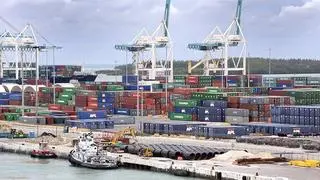Alrosa, Russia’s State-controlled diamond mining company, accounts for a third of the world’s reserves and more than a quarter of the global rough diamond production. The company has for long been one of the major suppliers of rough diamonds to India. However, demonetisation in India and the appreciation of the ruble has affected the company’s performance in the first half of 2017 with revenues slipping 17 per cent, EBITDA by 35 per cent and net profit by 46 per cent over the year-ago period. Nevertheless, Yury Okoemov, Alrosa Vice-President, tells BusinessLine that the company is bullish on direct trade with India, which is becoming more transparent due to large-scale reforms, including demonetisation and GST.
Demonetisation has affected Alrosa’s performance; are you still feeling its impact?
It did affect the diamond market in the end of 2016. One of the effects was a temporary decrease in the activity of small and medium players buying relatively cheap and small rough [diamonds]. Hence, Alrosa accumulated inventories of small-size rough diamonds — they were cleared in the first half of 2017. In February-March of this year, the demand for this type of rough [diamond] has recovered almost completely. Speaking about the impact on the industry, this reform has contributed to greater transparency.
Are you expecting any increase in trade volumes with India this year?
India was and remains one of the main export markets for Alrosa. It is our second-largest trading partner, accounting for 17 per cent of our sales. In 2016, Alrosa directly sold rough diamonds worth $752.6 million to Indian companies. Sales have risen by a third, compared to $ 574.8 million in 2015.
In 2014, Alrosa signed three-year-long contracts with twelve Indian companies. Are you planning to extend their validity and, probably, sign up more Indian diamantaires?
All these contracts remain valid till today. Moreover, by the end of 2016 the number of such long-term contracts had increased to 16. At the moment, we are getting ready for a new three-year contract period (from 2018 to 2020). This includes revising the list of long-term clients and discussing the terms and conditions of supply.
It is widely believed that only half the diamonds mined in Russia reach India through the direct route — the remainder come via diamond centres in Dubai, Belgium and Israel. Russia and India have been trying to increase direct trade for many years now; has anything been achieved on this front?
If we look at sales volumes, companies with Indian capital registered in other countries today buy more rough than we supply directly to India. I believe, this will change gradually as in India is creating more favourable conditions for doing business here. We see a lot of positive steps taken by government authorities in this direction.
Do you see GST as one such step, even though the industry was initially upset over rough treatment under the new tax system?
Yes, GST is one of the positive steps that could help regulate the Indian diamond market. Before the new regime was announced, some market players — and here I do not consider Alrosa’s regular clients — were not fully meeting today’s requirements for business transparency. Some of the small and medium scale diamantaires working mainly with small rough [diamonds] often did not even register their businesses. As a result, transparent companies had to compete with them, often facing dumping-like competition. We now see that GST is gradually solving this issue and we definitely welcome this shift to better transparency.
Alrosa had planned to increase trade with India through the India Diamond Trading Centre, the first Special Notified Zone (SNZ) in Mumbai. Do you find such SNZs in India competitive enough when compared to other diamond centres?
Alrosa’s interests are represented in SNZ through our subsidiary Arcos East DMCC, which is registered in Dubai. As taxation formalities are not yet resolved at SNZ, it is not operating in its full mode and we can only arrange diamond viewing sessions there, but not sell roughs. This, of course, limits the opportunities of Indian exchange compared to other global centres, but we believe this will be solved very soon.
After the opening of the Eurasian Diamond Centre in Vladivostok, Russia’s Far East, Alrosa has been eyeing doubling of its rough sales in the Asia-Pacific. Will this help raise trade with India too?
Earlier this month, India’s KGK Group launched its diamond cutting and polishing factory in Vladivostok. It is projected to cut from 9,000 up to 15,000 carats per month. Alrosa and KGK have already signed the rough supply agreement till the end of 2018 and we are currently in talks on further supplies.
We are looking at expanding our export markets in Asia-Pacific region, both by selling roughs through Eurasian Diamond Centre and by roping in new clients in China and Hong Kong, and in the future, in Japan, Singapore and South Korea. We expect our Vladivostok branch to reach a sales target of at least $70 million by the end of 2017.
Alrosa had plans to set up an office in Mumbai.
We expect the Mumbai office to start operations by the end of 2017. The office will be located in Bharat Diamond Bourse, which already has excellent business infrastructure. Although the office will not be engaged in trade, having a representative office will help us understand the Indian market better, respond to requests promptly, and solve some of the existing concerns, including establishing better cooperation with banks on issues with industry financing.







Comments
Comments have to be in English, and in full sentences. They cannot be abusive or personal. Please abide by our community guidelines for posting your comments.
We have migrated to a new commenting platform. If you are already a registered user of TheHindu Businessline and logged in, you may continue to engage with our articles. If you do not have an account please register and login to post comments. Users can access their older comments by logging into their accounts on Vuukle.